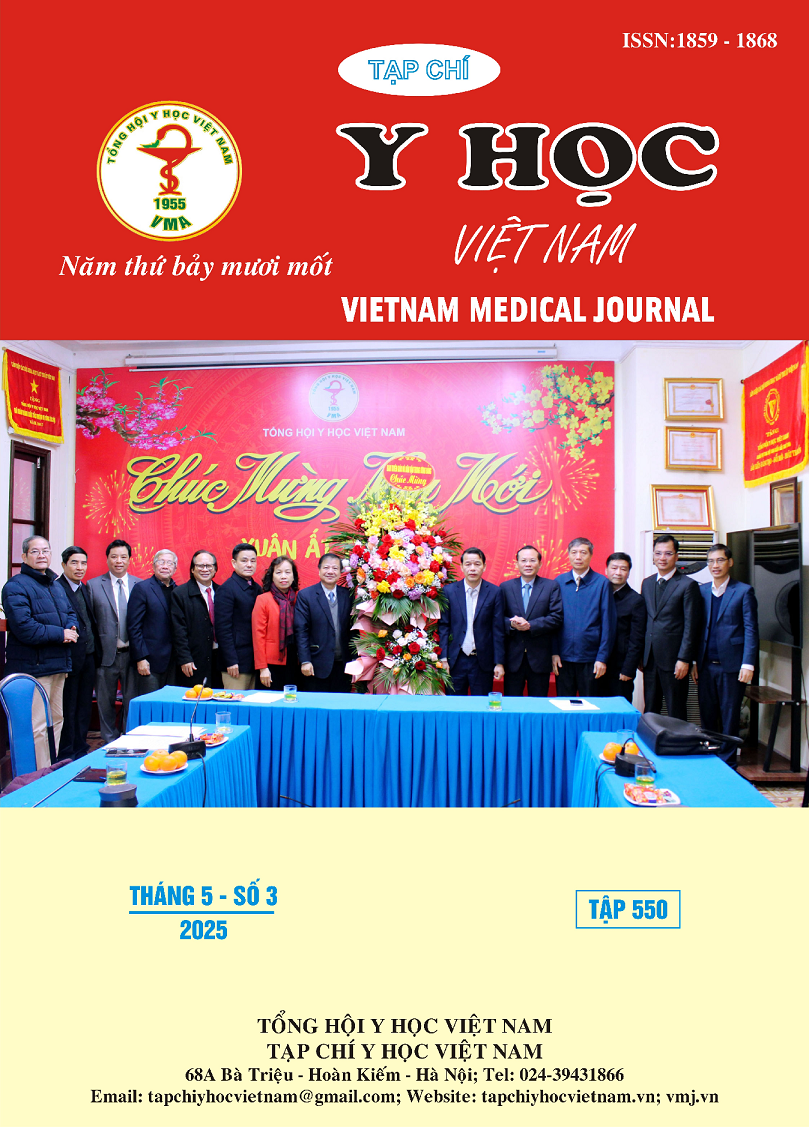CLINICAL CHARACTERISTICS OF TRAUMATIC EYELID AND RESULTS OF TREATMENT AT TAY NGUYEN GENERAL HOSPITAL
Main Article Content
Abstract
Purpose: Describe the clinical characteristics and evaluate the results of treatment of traumatic eyelid damage at Tay Nguyen General Hospital. Methods: A prospective observational describing study with 86 eyes of 85 patients diagnosed eyelid injuries at Tay Nguyen General Hospital from October 2023 to May 2024 followed for 3 months. Results: 86 eyes of 85 patients (63 males and 22 females) were analized. An average age was 34.5 ±18.2. Causes included traffic accidents 43%, domestic accidents 18.6%, fights 17.4%, occupational accidents 15.2%, dog bites 5.8%. Injury to both eyes 1.2%, one eye 98.8%. Rate of patients with surgery time before 24 hours was 74.2%, from 24 hours to 48 hours 16.1%, 72 hours to 7 days 6.5%, and after 7 days 3.2%. Eyelid contusion injuries accounted for 27.9%, eyelid lacerations 72.1%. Considering eyelid lacerations types, the incidence of simple lacerations, lacrimal passage-involving eyelid lacerations and crossing the eyelid margin lacerations represented 48.4%, 35.5% and 16.1% of cases. Combined injuries with skull were 20.9% and eyeball-orbit 34.9%. Superior and inferior lacrimal canaliculus lacerations included 18.2% and 81.8%. Medical treatment in 25.6%, surgical treatment 74.4%. After 3 months, 87% of patients had good eyelid anatomy, 88.7% of patients achieved good eyelid function, 88.3% of patients achieved good lacrimal anatomy, 72.2% of patients achieved good lacrimal function. Of 17.7% patients had complications, infections were 1.6%, lagophthalmos-ectropion 4.8%, hypertrophic scars 4.8%, lacrimal punctum malpositions-loss of silicone tube 6.5%. Conclusion: Eyelid injuries occurred mostly in men of working age group, due to traffic accidents. The main cause of hospitalization in children was dog bite. Eyelid injuries were often accompanied with injuries of the brain or eyeball. Eyelid wound complications often affected aesthetics and patient's life, such as hypertrophic scars, lagophthalmos-ectropion, lacrimal punctum malpositions. And these complications were not related to time and causes of injuries.
Article Details
Keywords
Eyelid trauma, eyelid lacerations epidemiology, Tay Nguyen General Hospital
References
2. Doğan E, Coşkun ŞB, Güner Sönmezoğlu B, Alagöz G. Demographic, Etiological, and Clinical Characteristics of Eyelid Lacerations. Turk J Ophthalmol. 2024;54(1):17-22.
3. Cade KL, Taneja K, Jensen A, Rajaii F. Incidence, Characteristics, and Cost of Eyelid Lacerations in the United States from 2006 to 2014. Ophthalmol Ther. 2023;12(1):263-279.
4. Chiang E, Bee C, Harris GJ, Wells TS. Does delayed repair of eyelid lacerations compromise outcome? Am J Emerg Med. 2017;35(11):1766-1767. doi:10.1016/j.ajem.2017.04.062
5. Zagelbaum BM, Starkey C, Hersh PS, Donnenfeld ED, Perry HD, Jeffers JB. The National Basketball Association eye injury study. Arch Ophthalmol. 1995;113(6):749-752. doi:10.1001/archopht.1995.01100060075035
6. He CH, Poulsen DM, Parsikia A, Mbekeani JN. Characteristics of ocular trauma in the United States. Arq Bras Oftalmol. 2022;85(3):240-248. doi:10.5935/0004-2749.20220035
7. Boret C, Brehin C, Cortey C, et al. Pediatric ocular trauma: Characteristics and outcomes among a French cohort (2007-2016). Arch Pediatr. 2020;27(3):128-134.
8. Tabatabaei A, Kasaei A, Nikdel M, et al. Clinical characteristics and causality of eye lid laceration in iran. Oman Med J. 2013;28(2):97-101.
9. Qin YY, Li ZH, Lin FB, et al. Risk factors for persistent epiphora following successful canalicular laceration repair. International Journal of Ophthalmology. 2021;14(1):106.
10. Awidi AA, Zhao J, Li X, et al. Etiology and Characteristics of Patients Presenting with Eyelid Lacerations at a Level 1 Trauma Center. Clin Ophthalmol. 2024;18:929-935.


